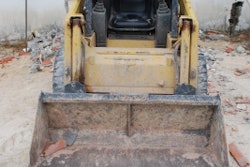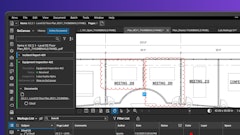
Want to establish and enhance your reputation with your customers? Make sure the first impression you make is a great one. Previous articles have offered insights covering phone etiquette and using your equipment to market — and this article tackles letter writing. Few companies take the time, but writing a letter can solidify and put the finishing touches on the impression you first made on your customer — and there’s an easy way to do it.
At the conclusion of the first interaction with a customer a written letter will complete the process of making a first impression. Letters should reflect your sincere desire to meet their needs and should specifically address items that were requested by the customer or confirm what information has already been discussed.
The first rule of customer letter writing might be the most important one, and it follows the K.I.S.S principle. Once you learn to Keep It Simple Stupid (K.I.S.S.) your letters will become easier to produce and more vital to your overall customer retention strategy.
Whenever addressing a customer through a letter it’s important to keep the letter’s tone friendly while also keeping the content brief and specific to the purpose. Depending on the purpose of the letter it should rarely exceed one page and never two pages. Keeping the K.I.S.S. principle in mind, consider the example presented below.
Dear Mr. Jones:
Thank you for your call this past Thursday. It’s always nice to know that perhaps having our name on our equipment makes it easier for people to remember who we are and how to contact us.
As you requested, I did walk your parking lot and measured the areas you were interested in having repaired. For your benefit I have enclosed a map of your lot with the areas in need of work noted on the map. You will find the areas numbered and matching those areas I outlined in yellow.
I believe that we can perform the needed work for the budget figure you shared with me. Please find the enclosed proposal, with specified work to be completed, prepared for your signature. You may fax to me the signed proposal, and I will call you to confirm the scheduled dates you requested.
Thank you for allowing Friendly Construction the opportunity to serve you. I am confident that our work will please you and sustain the quality appearance that your property projects. I will follow up with you this next week to discuss any questions you may have.
Best Regards,
Brad Humphrey
President
Notice that the tone of the letter is friendly but not too nice. It is simple, straightforward, addresses the enclosed proposal and ends in a positive upbeat manner. A temptation for some contractors is to combine a follow-up letter, like the one printed above, with a proposal to do business. As a rule, a formal proposal is best left separate from the letter.
Let your letter writing to customers become your “calling card.” And this includes sending letters via e-mail messages. Few contractors enjoy writing; therefore, they are apathetic about writing letters to customers. If you are one of these contractors, consider the following times when a letter is probably a good idea.
- After the first customer interaction — a short thank you letter
- When any proposal for work is requested — a brief cover letter for the proposal
- When the customer has called with concerns or questions — a letter that specifically confirms information you have already provided
- Upon completion of scheduled work — a thank you letter
- When reminding a customer of your presence — a short letter to remind the customer of past work performed and an inquiry of any work to be completed
- When you receive work as a result of customer referral — a thank you letter to customer who referred you (if appropriate, enclose a dinner certificate)
Certainly the reason to write a letter is not limited to the items listed above. However, if you will incorporate letter writing for just the items listed, you will make a favorable first impression upon most of your customers and begin building long-term relationships.
Letter writing does not have to be painful. In some cases, form letters might be used if letters are part of a broad marketing plan to “canvas” businesses. Keep in mind that form letters tend to be generic in nature and quickly trashed by most recipients.
For strong customer ties it is often important to “touch” customers four to six times a year. Such contact keeps your name freshly implanted in your customer’s brain and creates and reinforces strong first impressions. Letters are simply one form of contact that can go a long way to building positive impressions with your customers.
Make letter writing a strategic component of your first impression effort. You will find that customers do appreciate your effort and will recognize you as someone committed to developing a professional relationship. Letters written to customers also send the signal to the customer that you take their business very serious.
© Brad Humphrey, The Contractor's Best Friend/Pinnacle Development Group



















